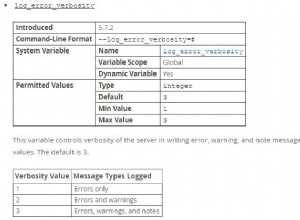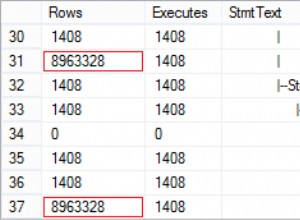Spróbuj tego;)
Zapytanie 1 :
select t1.*, t2.userCnt
from `posts` t1
inner join (
select max(`ID`) as `ID`, `user`, count(1) as userCnt
from `posts`
where `user` != '1'
and `post_type` = 'custom'
group by `user`
) t2 on t1.`ID` = t2.`ID` and t1.`user` = t2.`user`
order by t1.`ID` desc limit 4
Sprawdź to SqlFiddle Wyniki :
| ID | user | Date | title | status | post_type | userCnt |
|------|------|---------------------|-------|-----------|-----------|---------|
| 2783 | 5 | 2016-05-24 11:24:08 | Title | published | custom | 2 |
| 2759 | 3 | 2016-05-07 14:00:22 | Title | published | custom | 3 |
| 2757 | 12 | 2016-05-02 12:41:00 | Title | published | custom | 2 |
| 2683 | 15 | 2016-04-22 20:27:45 | Title | published | custom | 2 |
Podzapytanie t2 otrzyma maksymalny ID w każdym użytkowniku, gdy user != '1' and post_type = 'custom' , a następnie inner join t1 z t2 na t1.ID = t2.ID and t1.user = t2.user otrzyma nam rekord, który ma max ID przez każdego user w tabeli post . Na przykład:„2783”, „2759”, „2757”, „2683”, „2681”, „2652”, „2630” , „2617”, „2596”, „2215”.
I na koniec order by i limit , oczywiście możesz uzyskać „2783”, „2759”, „2757”, „2683”. Mam nadzieję, że nie pomyliłem twojego pytania.




